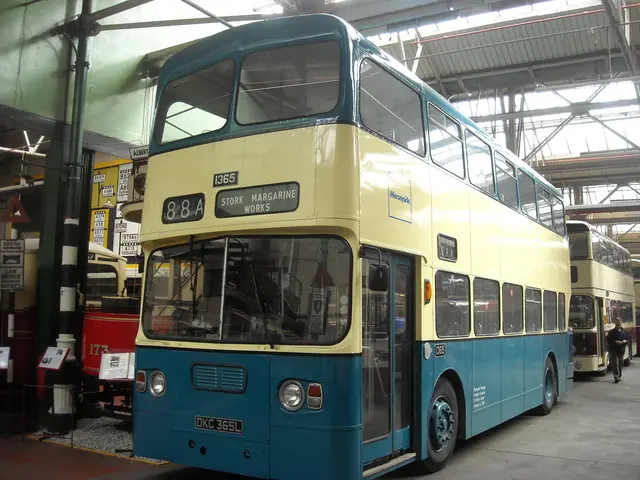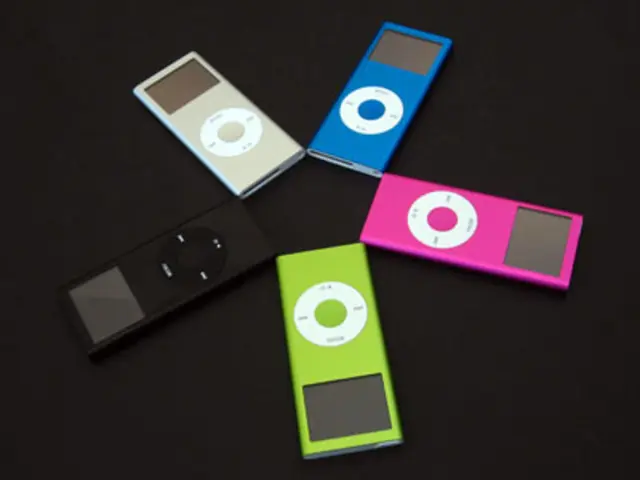Computer Integration in Pico Device
In a nod to the past, the prospect of a handheld DOS PC still holds some appeal due to the vast library of still-useful DOS software. One such project is the pico-286 emulator, designed to run on the Raspberry Pi Pico microcontroller.
The pico-286 emulator emulates an Intel 80286 CPU architecture, capable of running DOS software, including productivity and gaming applications. It supports VGA or HDMI video output, PS/2 keyboard and mouse input, and emulates sound and video cards suitable for DOS environments.
To create a handheld DOS PC using the pico-286 emulator, you'll need to follow a few core steps:
- Use the Raspberry Pi Pico as the core MCU running the pico-286 emulator. This emulation internalises the 286 hardware, so you don't install DOS directly on the Pico but run DOS-compatible software through the emulator.
- For hardware assembly, integrate the Raspberry Pi Pico board into a handheld case, connect a small VGA/HDMI display, a PS/2 or USB-to-PS/2 keyboard interface, mouse input if needed, and a suitable power source (battery). Miniaturizing and powering these components compactly require selecting low-power displays and keyboards and managing power supply and battery efficiently.
- Set up the firmware and OS. The pico-286 emulator firmware runs on the Pico, and you'll need to load FreeDOS or DOS software into the emulator environment. FreeDOS is an open-source DOS-compatible operating system with wide software support and is an excellent option for this project.
- Load FreeDOS or DOS software. Prepare disk images or floppy/disk replacements with FreeDOS or DOS programs and load them into the pico-286 emulator. The emulator uses its firmware and storage emulation to boot and run the DOS environment.
For those interested in programming on the Pico, upload the pico-286 UF2 firmware via the BOOTSEL mode (hold BOOTSEL while plugging into USB). For development and experimentation, you may also run MicroPython on Pico for controlling peripherals, but the 286 emulation requires the specific pico-286 firmware, not MicroPython.
The pico-286 emulator is not primarily designed for entertainment purposes but for productivity machines from years past. It demonstrates the potential for microcontrollers to emulate advanced systems, with the creation of the pico-286 emulator suggesting a shift towards emulating more powerful and productive machines.
In 2025, FreeDOS remains a viable option for obtaining an open-source DOS system, making it an attractive choice for this project. If DOS games are desired, the pico-286 emulator should provide what is wanted.
Available Open-Source DOS Options for pico-286 and Similar Projects:
| DOS Option | Description | Notes | |---------------|-------------------------------------------------------------------------------------------------|---------------------------------------------| | FreeDOS | A free, open-source DOS-compatible operating system with wide software support | Most popular open-source DOS, actively maintained[1] | | OpenDOS | Formerly Caldera DOS; limited current development | Less common, proprietary legacy | | ROM-DOS | Commercial embedded DOS-compatible system | Not open-source, but occasionally used in embedded projects | | Other hobby OSes | Various small DOS-like or DOS-compatible shells exist but lack wide compatibility | Less suited for general DOS software |
[1] Source
Read also:
- Hematology specialist and anemia treatment: The role of a hematologist in managing anemia conditions
- A Week in Pixelized Realm: The Transformation of the World in Digital Form
- If you're running late for a Lyft ride, be prepared to shell out some extra cash
- McLaren's High-Performance Supercar: The McLaren Senna







